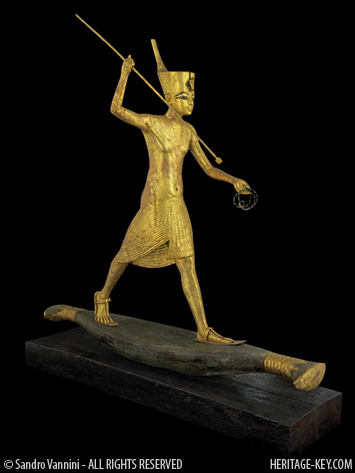One of Torontos most unique cultural getaways is a place dedicated to one small, but important, facet of human culture shoes. The Bata Shoe Museum, as its name suggests, is a museum dedicated to the history of shoes. It shows shoes ranging from 4,500 years ago to the modern day. Youcan find shoes worn by Anasazi, the ancient Egyptians and, yes, even Pamela Anderson all in the same building.
Shoes in the ancient world are rare archaeological finds.An archaeologist can excavate a decent sized city and not find a single pair. As such the bulk of the museums collection postdates the ancient world.
But, there are a number of treats for those of us interested in ancient shoes. The museum has a pair of 2,000 year old yucca leaf sandals from the Anasazi culture, from the American Southwest, which are remarkably well preserved.
Another 1st century AD favourite of mine is a bronze statue of a caliga, a sandal boot worn by Roman soldiers. The Romans legionnaires clearly have a lot of respect for this footwear to make a statue of it!
But, perhaps the museums most precious artefact is a pair of silver embellished ataderos (ankle boots) from the Chimu Culture (12 to 15th century AD) of Peru. According to the museum these boots were likely intended for an elite burial. Silver, in the Chimu culture, was a luxury item limited to the upper classes.
These boots are the only known surviving pair that may have actually been worn. The three others, known to exist, are all miniatures.
Asfor the Egyptians, the museum has a few examples from ancient times – including a pair of red leather shoes with gilded embellishment that date to the Coptic period (4th century AD) of history. In all likelihood they were worn by a woman and would have been considered quite stylish in there day.
They also have a pair of ca. 2,500 BC wooden sandals, which would likely have been used as grave goods. Wood is not a very practical material to wear. Another pair the museum has is a Ptolemaic period pair of papyrus sandals (they used it for more than writing!). Again these were likely grave goods and wouldnt have been used for everyday wear.



